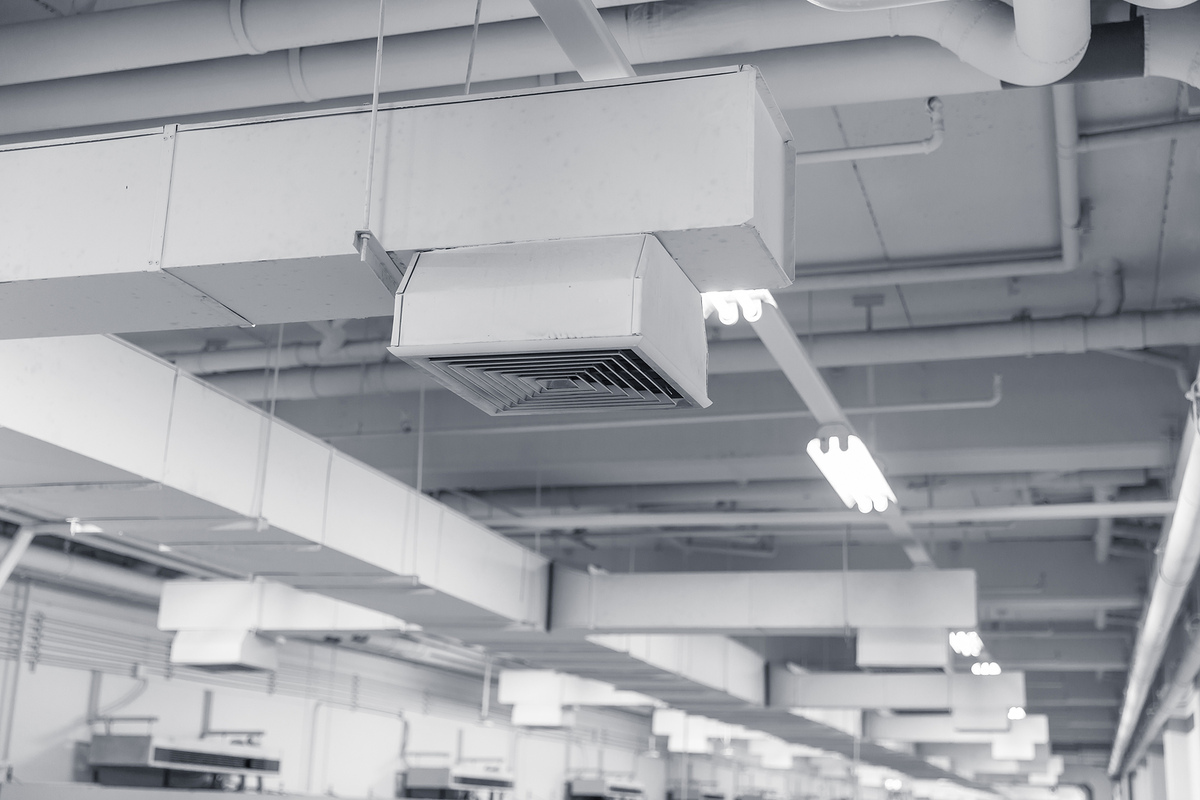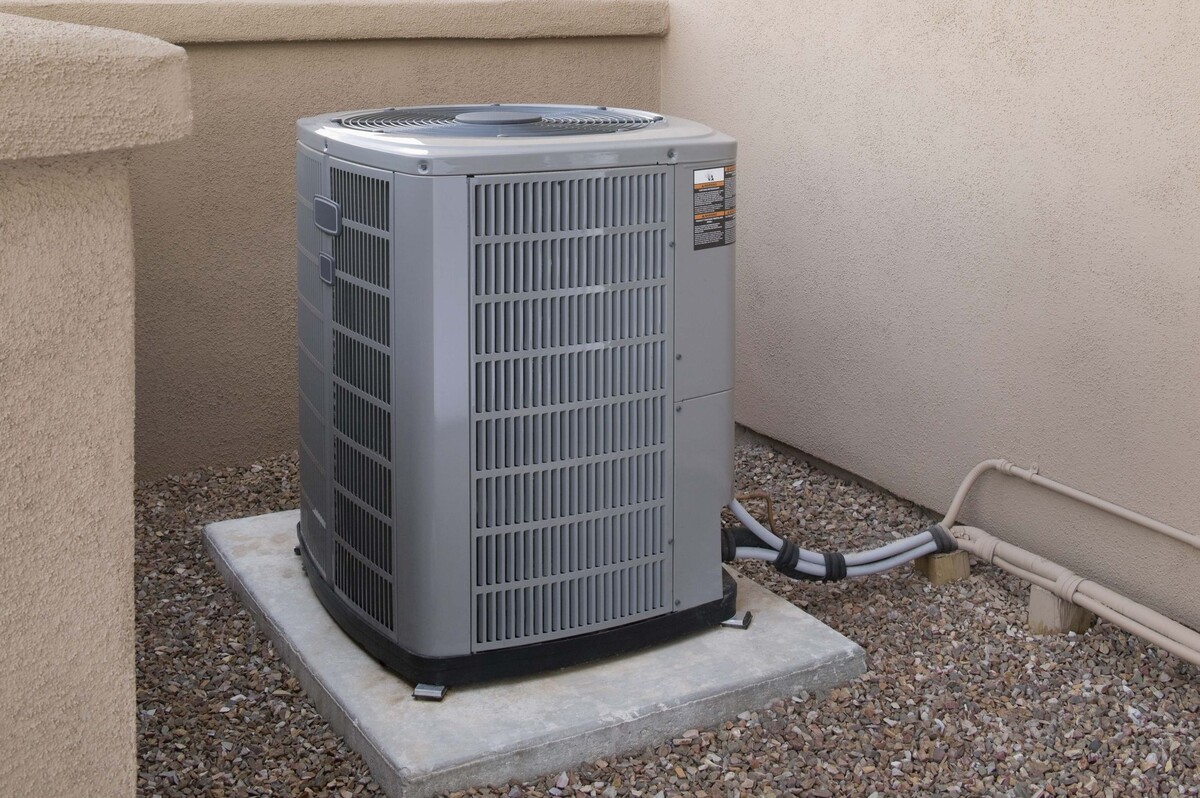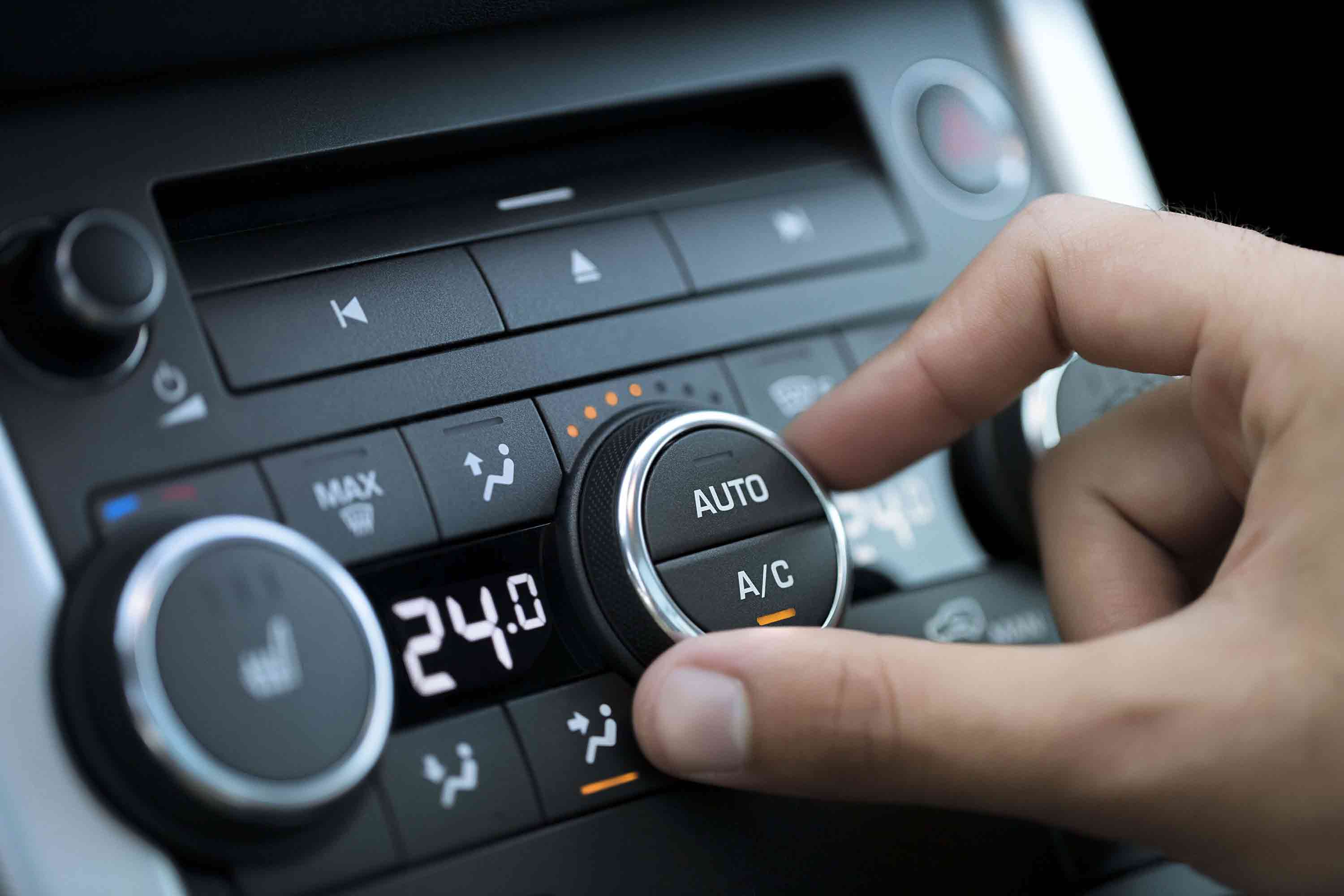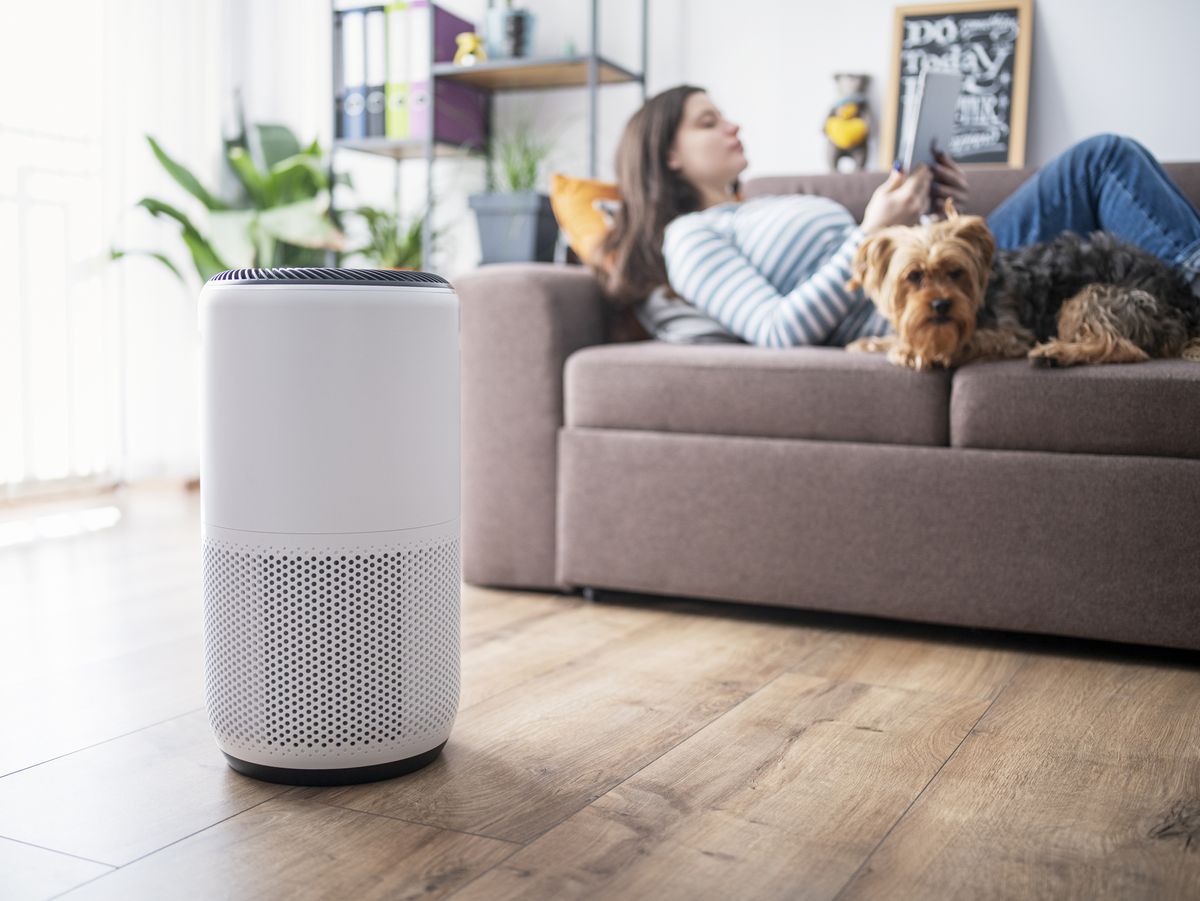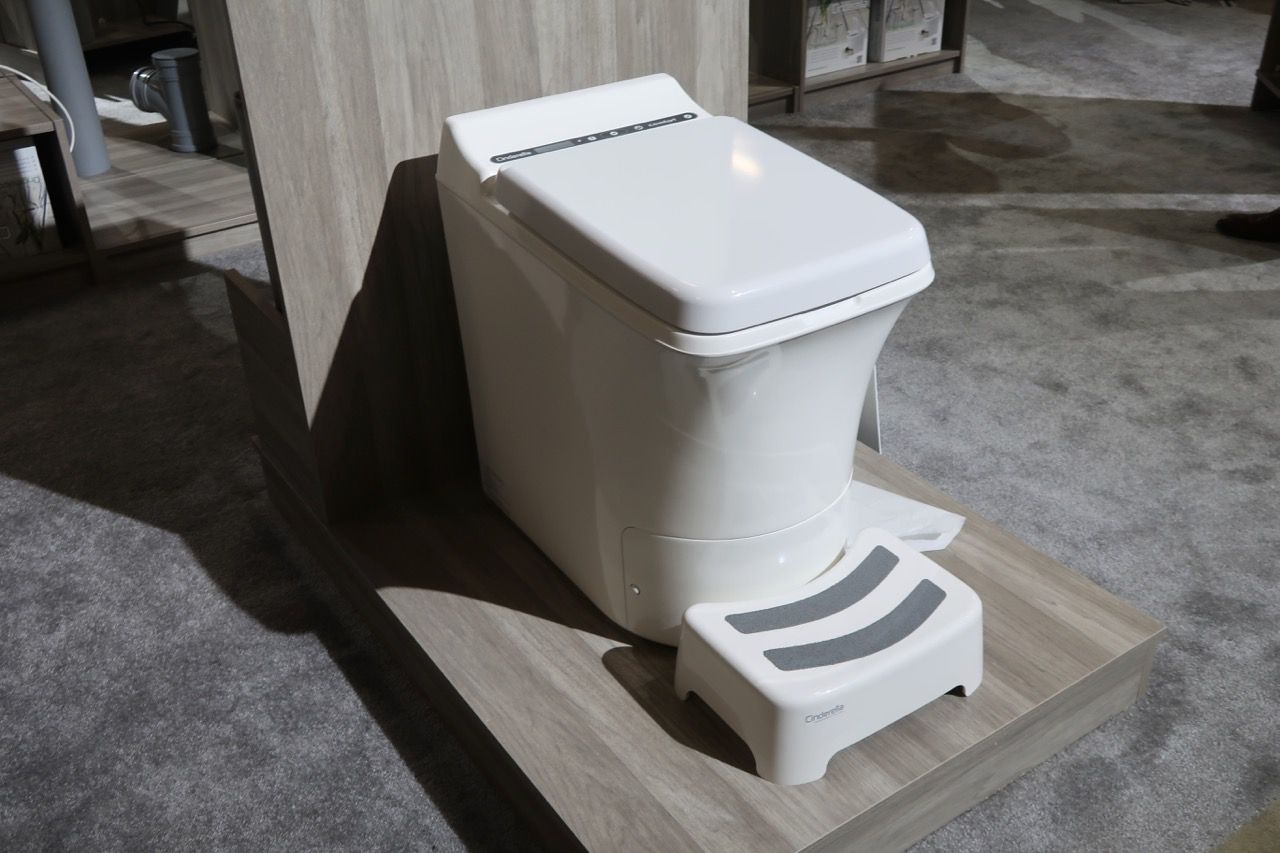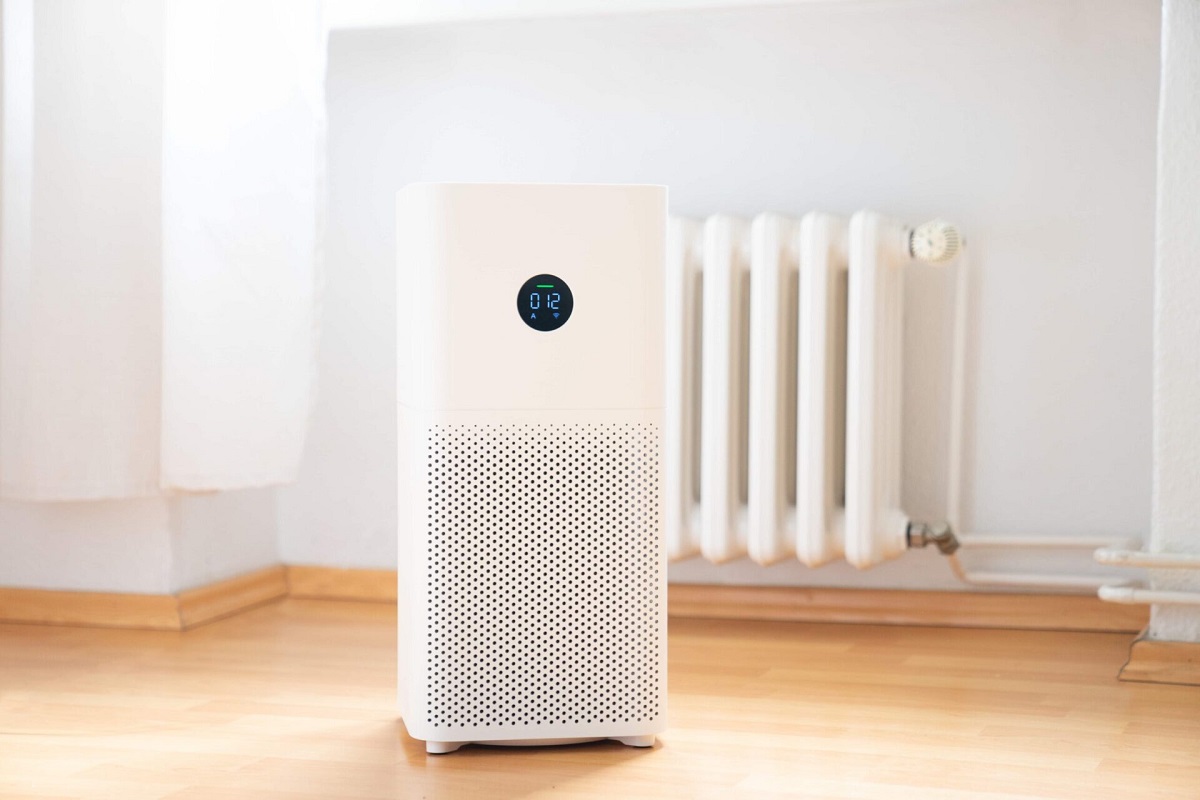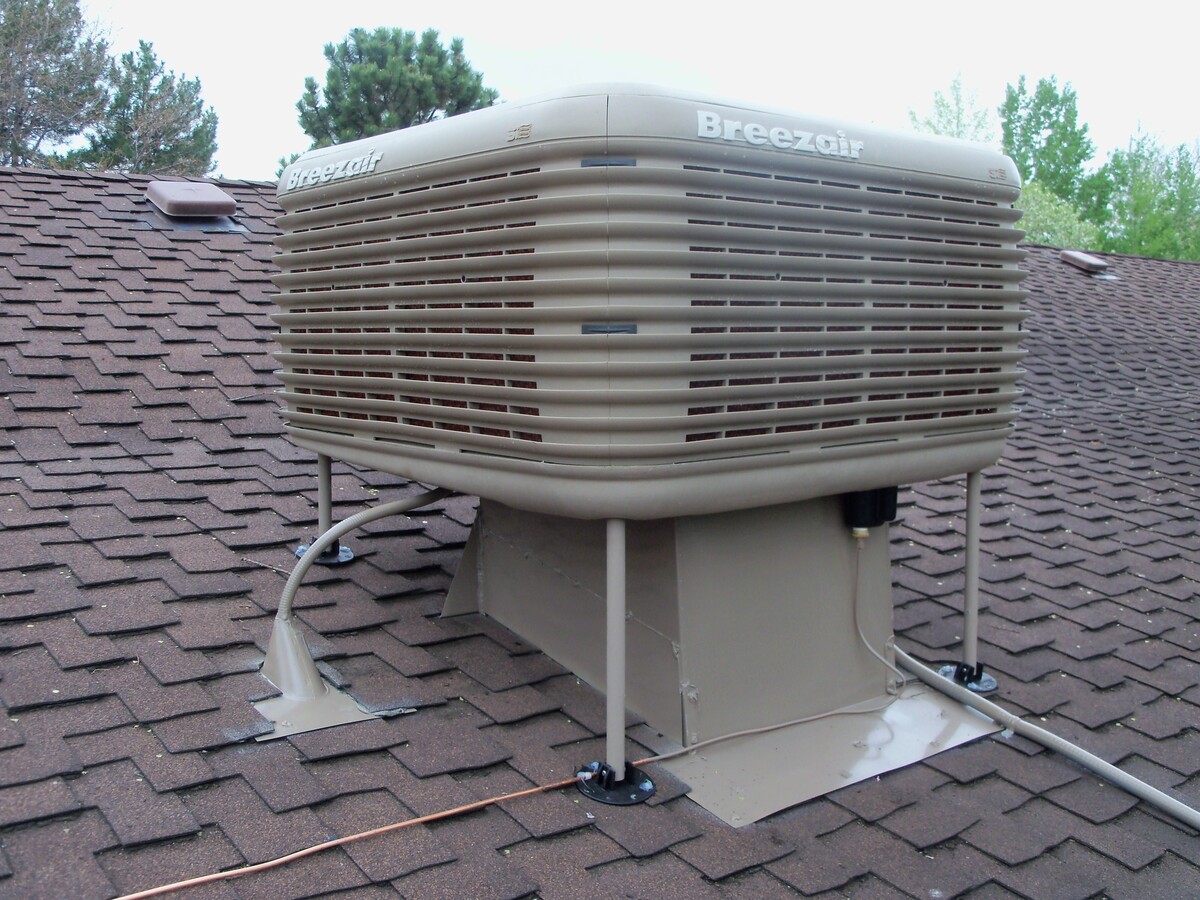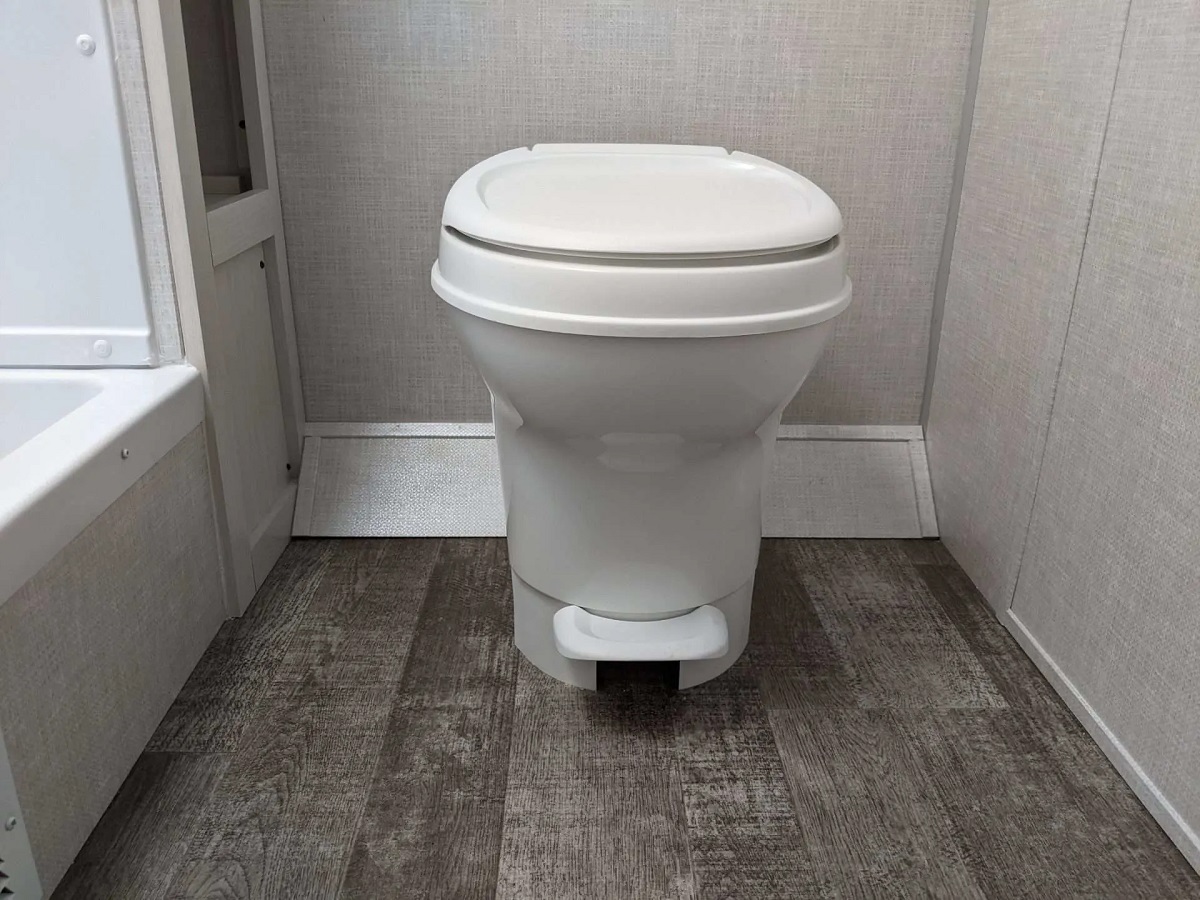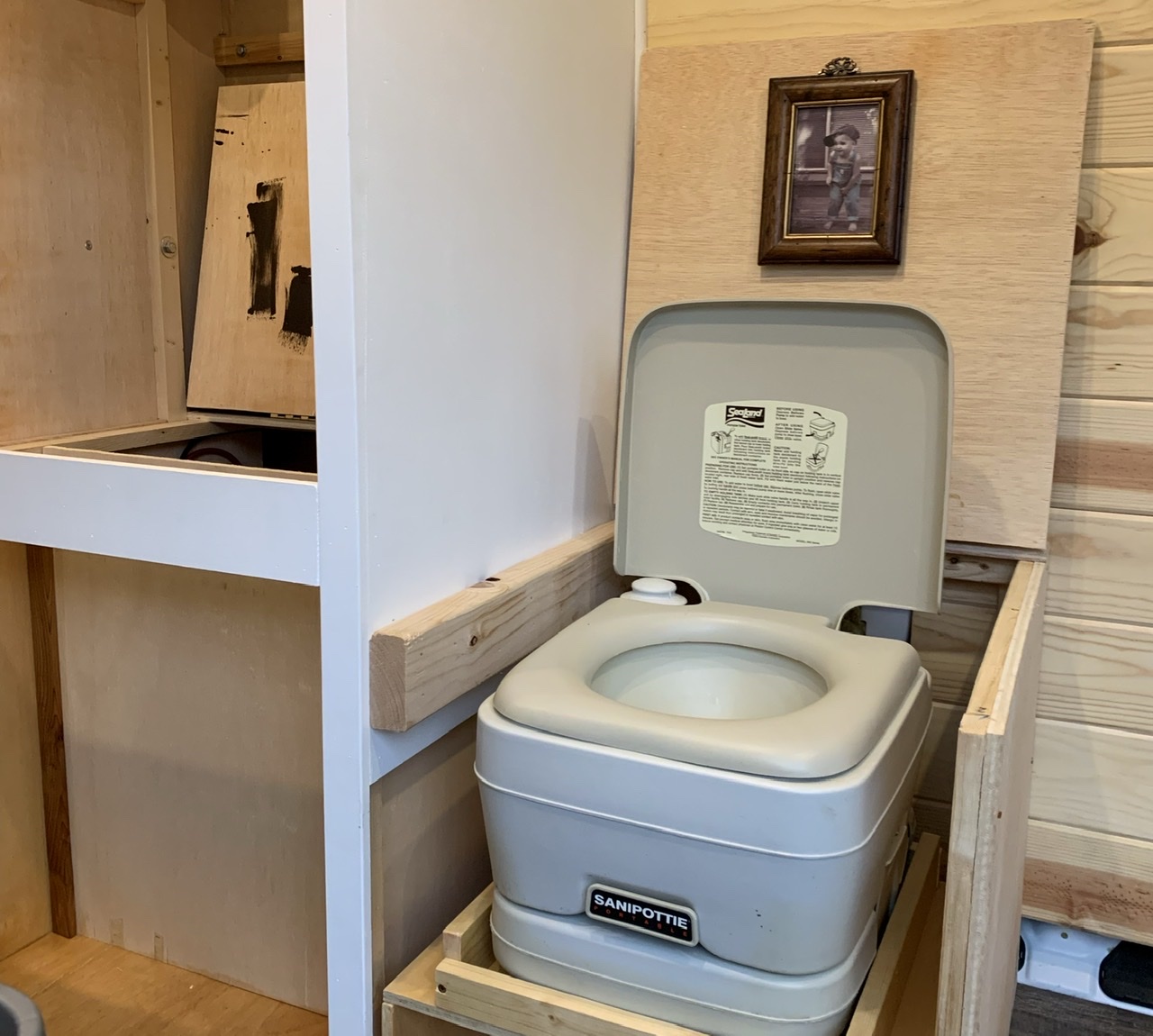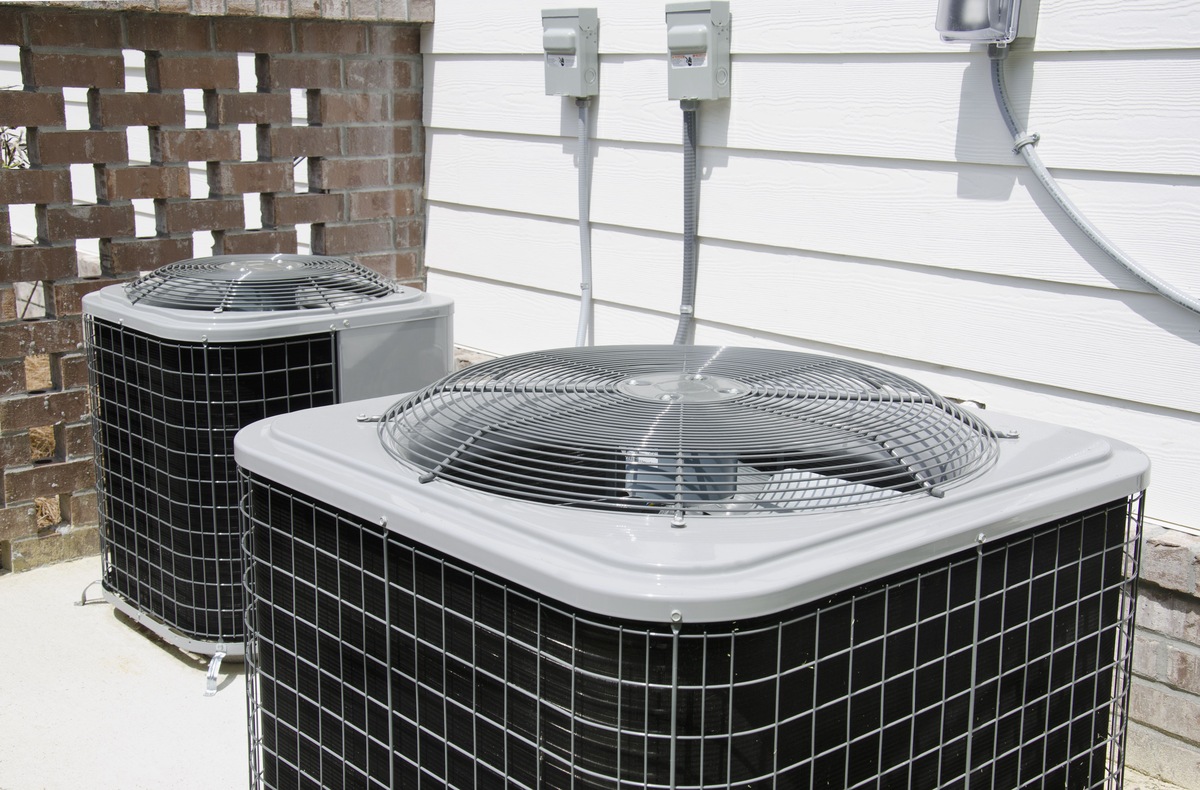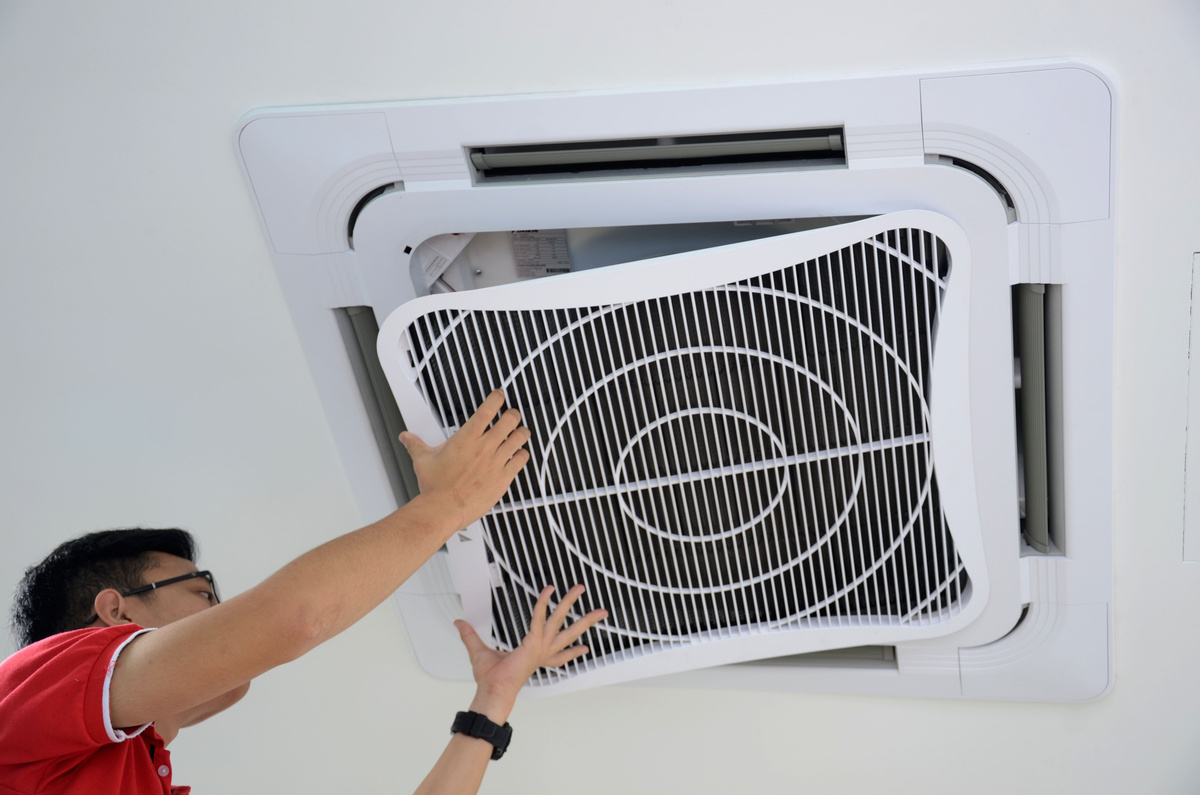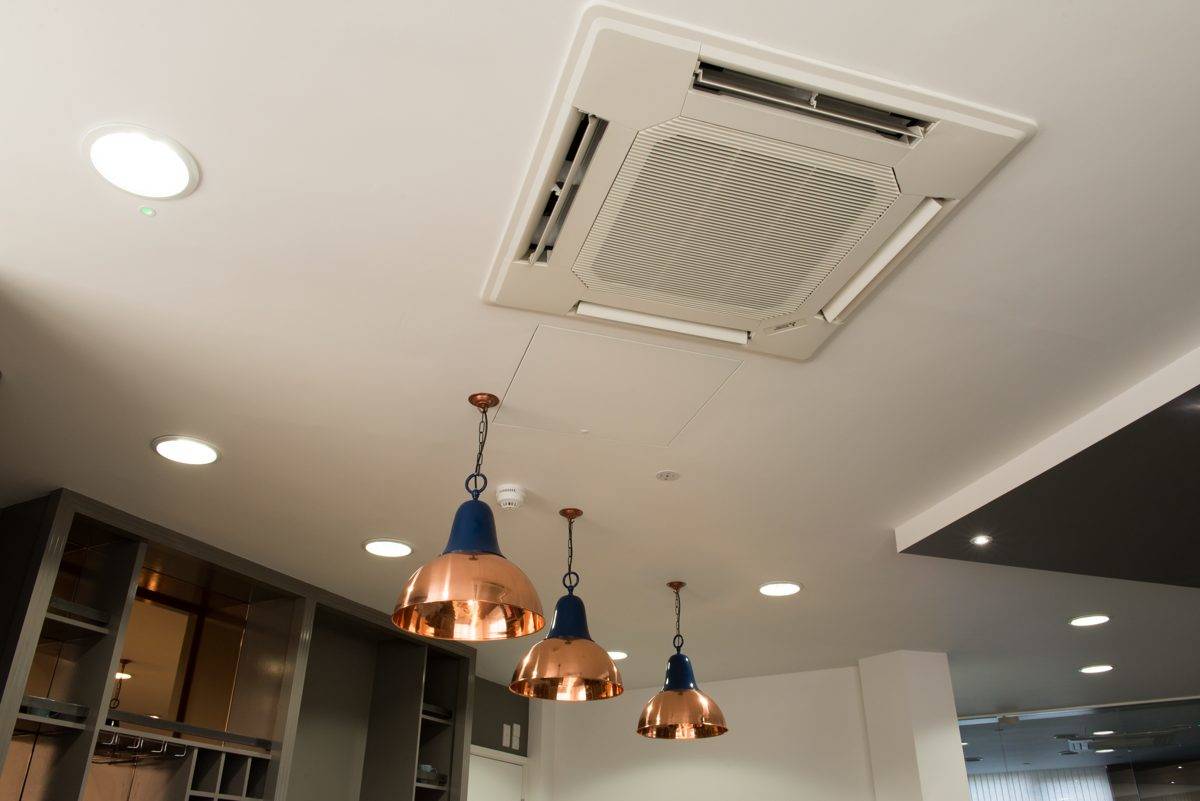Home>Home Maintenance>How Does Ducted Air Conditioning Work
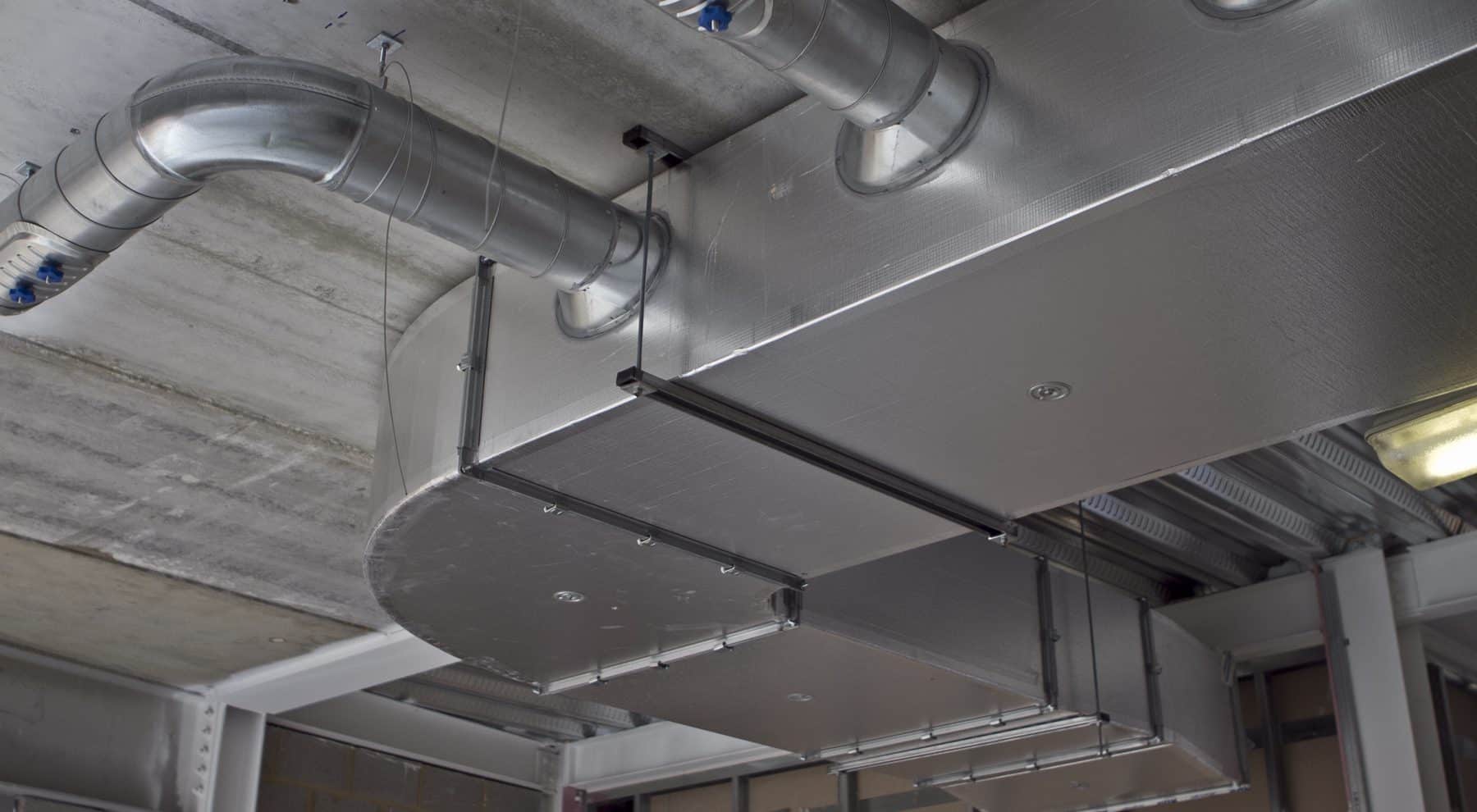

Home Maintenance
How Does Ducted Air Conditioning Work
Modified: March 6, 2024
Learn how ducted air conditioning works for efficient home cooling and maintenance. Explore the benefits and principles of this HVAC system for your comfort.
(Many of the links in this article redirect to a specific reviewed product. Your purchase of these products through affiliate links helps to generate commission for Storables.com, at no extra cost. Learn more)
Introduction
Welcome to the world of ducted air conditioning, a highly efficient and versatile cooling and heating system for your home. Whether you’re living in a warm climate and need relief from scorching summers, or you’re seeking cozy warmth during cold winters, ducted air conditioning has got you covered.
Ducted air conditioning is a centralized cooling and heating system that is designed to provide consistent and comfortable temperatures throughout your home. It works by distributing conditioned air through a network of ducts that are hidden within the walls, floors, or ceilings of your house. With customizable zoning capabilities, you can have individual control over different areas or rooms, ensuring personalized comfort for everyone.
In this article, we will delve into the inner workings of ducted air conditioning systems, explore their advantages and limitations, discuss maintenance tips for optimal performance, and touch upon energy efficiency and cost considerations. By the end, you’ll have a comprehensive understanding of ducted air conditioning and be well-equipped to make informed decisions for your home.
Key Takeaways:
- Ducted air conditioning systems evenly distribute comfortable temperatures throughout your home, offering personalized zoning and energy efficiency for year-round comfort.
- Regular maintenance and proper care are essential for optimal performance of ducted air conditioning systems, ensuring longevity and efficient operation.
Read more: How Does Marine Air Conditioning Work
Basics of Ducted Air Conditioning
Before we dive into the intricacies of ducted air conditioning systems, let’s start with the basics. Ducted air conditioning, also known as central air conditioning, is a cooling and heating system that utilizes a central unit to condition and distribute air throughout your home. It consists of three main components: the indoor unit, the outdoor unit, and the ductwork.
The indoor unit, usually installed in the ceiling or under the floor, contains the evaporator coil, fan, and air filter. The outdoor unit, typically placed outside your house, houses the compressor, condenser coil, and fan. The ductwork acts as a network of pathways that transport conditioned air to different areas or rooms in your home.
One of the key features of ducted air conditioning is its ability to distribute conditioned air evenly throughout the house. This is achieved by strategically placing supply vents in each room or area, allowing for customized temperature control and comfort for every individual.
Another important aspect of ducted air conditioning is zoning. Zoning allows you to divide your home into different zones or areas, each with its own thermostat and control. This means you can set different temperatures for different zones, depending on your preferences and usage patterns. For example, you can keep the living room cool during the day while saving energy by keeping the bedrooms slightly warmer.
Furthermore, ducted air conditioning offers both cooling and heating capabilities. During the hot summer months, the system extracts warm air from inside the house, cools it down, and then circulates the cooled air through the ducts. In the colder months, the system reverses the process, extracting heat from outside and transferring it indoors, providing warmth and comfort.
Now that we have a solid understanding of the basics of ducted air conditioning, let’s explore the various components that make up these systems in more detail.
Components of Ducted Air Conditioning Systems
A ducted air conditioning system consists of several essential components that work together to provide efficient and reliable cooling and heating. Let’s take a closer look at each of these components.
- Indoor Unit: The indoor unit is typically installed in the ceiling or under the floor. It contains the evaporator coil, which is responsible for cooling the air, and the fan, which circulates the conditioned air throughout the house. The air filter, located in the indoor unit, helps to remove dust, allergens, and other particles from the air, improving the indoor air quality.
- Outdoor Unit: The outdoor unit, also known as the condensing unit, is usually installed outside the house. It houses the compressor, condenser coil, and fan. The compressor plays a crucial role in the cooling process by compressing and liquefying the refrigerant gas, enabling it to release heat efficiently. The condenser coil helps to dissipate the heat from the refrigerant to the outdoor air, while the fan assists in the airflow and heat exchange process.
- Ductwork: The ductwork is the network of insulated tubes that deliver conditioned air to different parts of your home. It consists of supply ducts, which carry the cooled or heated air from the indoor unit to the various rooms, and return ducts, which bring the air back to the indoor unit for reconditioning. Properly sized and sealed ductwork is essential for efficient airflow and optimal performance.
- Thermostat: The thermostat serves as the control center of your ducted air conditioning system. It allows you to set and adjust the desired temperature, control fan speed, and program heating and cooling schedules. Some advanced thermostats even offer remote access and smart home integration, enabling you to manage your system from anywhere using your smartphone or voice commands.
- Zoning Controls: Zoning controls allow you to divide your home into different zones or areas, each with its own thermostat and control. By creating separate zones, you can customize the temperature and airflow to meet individual preferences and optimize energy efficiency. Zoning controls can be integrated with the thermostat, providing convenient and flexible temperature control throughout your home.
These components, when working together harmoniously, ensure the efficient and effective functioning of your ducted air conditioning system. Now that we have explored the components, let’s delve into the working principles of ducted air conditioning systems to gain a deeper understanding of how they operate.
Working Principles of Ducted Air Conditioning Systems
Understanding the working principles of ducted air conditioning systems can shed light on how they provide comfortable and consistent temperatures throughout your home. Let’s explore the step-by-step process of how these systems operate.
- Cooling Process: During the cooling mode, the indoor unit’s fan draws warm air from the rooms through the return ducts. This warm air passes over the evaporator coil, which contains a refrigerant. The refrigerant absorbs heat from the air, causing it to cool down. The cooled air is then circulated back into the rooms through the supply ducts, while the heat absorbed by the refrigerant is carried to the outdoor unit.
- Heat Transfer: In the outdoor unit, the refrigerant releases the absorbed heat to the outside air. The compressor plays a pivotal role in this process by compressing the refrigerant gas, raising its temperature. The heated refrigerant then flows to the condenser coil, where the heat is released to the outdoor air. The refrigerant, now cooled down, returns to the indoor unit to repeat the cycle.
- Zoning: Ducted air conditioning systems offer the flexibility of zoning, allowing you to divide your home into different zones or areas. Each zone has its own thermostat and control, which regulates the airflow and temperature in that specific zone. The zone dampers, located within the ductwork, open or close to redirect the conditioned air to the desired zones, providing personalized comfort and energy efficiency.
- Temperature Control: The thermostat serves as your system’s command center. You can set the desired temperature, fan speed, and even program heating and cooling schedules. The thermostat communicates with the indoor and outdoor units, ensuring that the system operates according to your preferences and maintains a comfortable indoor environment.
By incorporating these working principles, ducted air conditioning systems deliver efficient and precise temperature control throughout your home. The ability to cool and heat, along with customizable zoning options, make these systems a popular choice for homeowners seeking reliable and versatile climate control solutions.
Now that we understand how ducted air conditioning systems work, let’s uncover the various advantages they offer.
Advantages of Ducted Air Conditioning
Ducted air conditioning systems offer a range of advantages that make them a popular choice for homeowners. Let’s explore some of the key benefits of opting for a ducted air conditioning system.
- Even and Consistent Cooling: Ducted systems distribute conditioned air through a network of ducts, ensuring even and consistent cooling throughout your home. This eliminates hot spots and cold spots, providing a comfortable environment in every room.
- Zoning Flexibility: One of the standout features of ducted air conditioning is the ability to create different zones in your home. Each zone can have its own thermostat and control, allowing you to customize the temperature and airflow according to individual preferences. This zoning flexibility helps optimize energy efficiency and caters to everyone’s comfort needs.
- Reduced Noise: Ducted air conditioning systems are known for their quiet operation. With the main unit located outside your home, the noise is minimized, making it an ideal choice for those who value peace and tranquility indoors.
- Aesthetically Pleasing: Unlike window units or split systems, ducted air conditioning is discreet and visually appealing. The ducts are hidden within the walls, floors, or ceilings, leaving no visible units or equipment in the individual rooms. This enhances the aesthetics of your home and allows for more design flexibility in your interior spaces.
- Improved Indoor Air Quality: Ducted systems often come with built-in air filtration, removing dust, allergens, and other contaminants from the air circulating in your home. This helps enhance the indoor air quality, creating a healthier environment for you and your family.
- Enhanced Energy Efficiency: Ducted air conditioning systems are designed with energy efficiency in mind. By utilizing zoning capabilities and programmable thermostats, you can regulate the temperature in each zone and reduce energy wastage. Additionally, advancements in technology and the use of high-efficiency components contribute to lower energy consumption.
These advantages make ducted air conditioning systems an appealing choice for homeowners seeking a comfortable, efficient, and aesthetically pleasing cooling and heating solution for their homes. However, it’s important to consider the potential drawbacks as well. Let’s explore some of the limitations of ducted air conditioning systems.
Ducted air conditioning works by using a central unit to cool or heat air, which is then distributed through ducts to different rooms in the building. Regular maintenance of the ducts and filters is important to ensure efficient operation.
Disadvantages of Ducted Air Conditioning
While ducted air conditioning systems offer numerous benefits, it’s important to consider their limitations as well. Here are some of the key disadvantages to keep in mind before deciding on a ducted air conditioning system for your home:
- Installation Complexity: Installing a ducted air conditioning system can be a complex and labor-intensive process. It requires professional expertise to design and install the ductwork, indoor and outdoor units, and zoning controls. This can increase the overall installation cost and may involve some disruption to your home during the installation process.
- Cost: Ducted air conditioning systems tend to have a higher upfront cost compared to other cooling options, such as window units or split systems. The cost includes not only the equipment but also the installation and ductwork. However, it’s important to consider the long-term energy savings and the enhanced comfort provided by ducted systems as a potential return on your investment.
- Limited Flexibility: Once a ducted system is installed, it can be challenging to make changes or additions to the ductwork. This limits the flexibility to reconfigure the system for room renovations or home expansions. As such, careful planning is necessary during the installation stage to ensure the system suits your current and future needs.
- Maintenance and Repairs: Like any mechanical system, ducted air conditioning systems require regular maintenance to ensure optimal performance. This includes cleaning or replacing air filters, inspecting and cleaning the ductwork, and servicing the indoor and outdoor units. Additionally, if any component of the system malfunctions, it may require professional repairs, which can add to the overall cost of ownership.
- Energy Loss: Despite their efficiency, ducted air conditioning systems can experience energy loss through poorly insulated or leaky ductwork. This can reduce the system’s overall efficiency and potentially lead to higher energy bills. Properly sealing and insulating the ductwork is crucial to minimize energy losses and maintain energy efficiency.
While these disadvantages should be considered, they are often outweighed by the benefits and long-term advantages of ducted air conditioning systems. With proper planning, maintenance, and investment, the drawbacks can be mitigated, allowing you to enjoy the comforts and advantages provided by ducted air conditioning.
Now that we’ve explored the advantages and disadvantages, let’s shift our focus to the maintenance and care required to keep your ducted air conditioning system running smoothly.
Maintenance and Care of Ducted Air Conditioning Systems
Regular maintenance and care are essential to ensure the optimal performance and longevity of your ducted air conditioning system. Here are some important maintenance tasks to keep in mind:
- Cleaning or Replacing Air Filters: Air filters play a critical role in maintaining good indoor air quality and preventing dust and debris from accumulating in the system. Clean or replace the filters on a regular basis to ensure proper airflow and efficient operation.
- Inspecting and Cleaning Ductwork: Over time, dust, dirt, and other contaminants can accumulate within the ductwork, affecting airflow and reducing efficiency. Periodically inspect and clean the ductwork to remove any buildup and ensure optimal performance.
- Servicing the Indoor and Outdoor Units: Schedule regular professional maintenance visits to service and inspect the indoor and outdoor units. This includes checking refrigerant levels, lubricating moving parts, cleaning the coils, and ensuring that all components are in good working condition.
- Sealing and Insulating Ductwork: Improperly sealed or insulated ductwork can result in energy loss and reduced efficiency. Ensure that the ductwork is properly sealed and insulated to minimize any air leaks and maximize energy efficiency.
- Monitoring Thermostat Settings: Periodically check and adjust the thermostat settings to ensure they are accurate and reflect your desired comfort levels. You may also consider programming temperature schedules to optimize energy usage.
- Trimming Vegetation around the Outdoor Unit: Ensure that there is adequate clearance around the outdoor unit, removing any vegetation or debris that may obstruct airflow. This helps maintain proper airflow and prevents potential damage to the unit.
Additionally, it’s important to stay vigilant for any signs of trouble or malfunctions. If you notice any irregularities, such as reduced airflow, strange noises, or unusual smells, contact a professional technician to diagnose and resolve the issue promptly.
By following these maintenance practices and promptly addressing any concerns, you can keep your ducted air conditioning system running smoothly and efficiently for years to come.
Now that we’ve discussed maintenance, let’s dive into energy efficiency and cost considerations when it comes to ducted air conditioning systems.
Energy Efficiency and Cost Considerations
Energy efficiency and cost effectiveness are important factors to consider when choosing a ducted air conditioning system for your home. Let’s explore some key considerations in terms of energy efficiency and cost:
- System Efficiency: Look for ducted air conditioning systems with high energy efficiency ratings. Energy Efficiency Ratio (EER) and Seasonal Energy Efficiency Ratio (SEER) are important metrics to consider. Higher EER and SEER ratings indicate better energy efficiency, meaning the system can provide the same cooling or heating output while using less energy.
- Zoning: Ducted air conditioning systems with zoning capabilities allow you to control the temperature in different zones of your home, optimizing energy usage. By only cooling or heating the areas that are in use, you can reduce energy consumption and potentially lower your utility bills.
- Thermostat Programming: Take advantage of programmable thermostats to schedule temperature changes based on your daily routine. Set higher temperatures when you’re away from home or asleep and lower temperatures when you’re present and active. This can lead to significant energy savings over time.
- Ductwork Insulation and Sealing: Well-insulated and sealed ductwork helps to minimize air leakage and energy loss. Inspect and ensure that your ductwork is properly insulated and sealed to maintain optimal energy efficiency and avoid unnecessary energy wastage.
- Maintenance and Filter Cleanliness: Regular maintenance, including cleaning or replacing air filters, is crucial for efficient operation. Clogged or dirty filters can restrict airflow, making the system work harder and consume more energy. Keep up with routine maintenance tasks to maintain optimal energy efficiency.
- System Sizing: Properly sizing your ducted air conditioning system is essential. Oversized units tend to short cycle, meaning they turn on and off frequently, leading to inefficient operation. Undersized units may struggle to cool or heat your home adequately. Consult with a professional to determine the right system size for your specific requirements.
- Initial Cost vs. Long-Term Savings: Ducted air conditioning systems typically have a higher upfront cost compared to other cooling options. However, they offer long-term energy savings and enhanced comfort, which can offset the initial investment over time. Consider the potential long-term savings and benefits when making your decision.
By considering these energy efficiency and cost factors, you can make an informed decision when selecting a ducted air conditioning system that not only suits your comfort needs but also offers long-term savings and environmental benefits.
Now, let’s address common issues and provide troubleshooting tips to help you resolve any problems you may encounter with your ducted air conditioning system.
Common Issues and Troubleshooting Tips
While ducted air conditioning systems are generally reliable, occasional issues may arise. Here are some common problems you may encounter and troubleshooting tips to help you resolve them:
- Insufficient Cooling or Heating: If you notice that your ducted air conditioning system is not providing adequate cooling or heating, check the thermostat settings to ensure they are set correctly. Also, make sure that the air filters are clean and not obstructed, as clogged filters can restrict airflow. If the issue persists, it is advisable to contact a professional technician to assess and repair any potential system malfunctions.
- Poor Airflow: If you experience weak airflow from the supply vents, check for any blockages or obstructions in the ductwork. Ensure the supply vents are open and not obstructed by furniture or other objects. Additionally, inspect and clean the air filters to remove any dirt or debris that may be impeding airflow. If the problem persists, it may be a sign of a more significant issue that requires professional attention.
- Strange Noises: Unusual noises, such as rattling, buzzing, or squealing, coming from your ducted air conditioning system may indicate loose or worn-out components. Check for loose screws, bolts, or panels and tighten them if necessary. If the noise persists, contact a professional technician to identify and resolve the issue, as it may be a sign of a mechanical problem that needs attention.
- Leaking Water: Water leakage from the indoor unit can indicate a blocked or clogged condensate drain line. Check the drain line for any obstructions and clear them if necessary. Also, ensure that the condensate drain pan is clean and free of debris. If the problem persists or if you notice a significant amount of water leakage, it is recommended to seek professional assistance to diagnose and fix the issue.
- Unresponsive Thermostat: If your thermostat is unresponsive or not controlling the system properly, check the batteries and replace them if necessary. Ensure that the thermostat is properly connected and wired. If the problem persists, consult the user manual or contact a professional technician for further assistance.
Remember, if you encounter any issues with your ducted air conditioning system and you are unsure about how to troubleshoot or fix them, it is always best to seek the assistance of a qualified HVAC technician. They have the expertise and knowledge to diagnose and address any problems effectively.
Now, let’s wrap up our discussion on ducted air conditioning systems.
Read more: How Does Geothermal Air Conditioning Work
Conclusion
Ducted air conditioning systems provide a comprehensive and efficient solution for cooling and heating your entire home. With their ability to distribute conditioned air evenly and their customizable zoning capabilities, ducted systems offer personalized comfort and energy efficiency.
From the basics of ducted air conditioning to the components, working principles, and advantages, we’ve explored the key aspects of these systems. We’ve also discussed the importance of regular maintenance and care to ensure optimal performance and longevity.
While ducted air conditioning systems offer numerous benefits, it’s essential to consider the potential drawbacks, such as the installation complexity and the upfront cost. However, when properly installed and maintained, the advantages of ducted air conditioning, including even cooling and heating, zoning flexibility, reduced noise, improved aesthetics, and enhanced energy efficiency, outweigh the disadvantages.
By considering energy efficiency and cost factors, such as system efficiency, zoning, maintenance, and system sizing, you can make an informed decision that aligns with your comfort needs, budget, and environmental aspirations.
Should you encounter any issues with your ducted air conditioning system, familiarize yourself with common problems and troubleshooting tips. However, it is always recommended to seek the assistance of a qualified HVAC technician for proper diagnosis and repair.
In conclusion, ducted air conditioning systems provide a reliable and effective means of maintaining comfortable temperatures in your home. With their versatility, energy efficiency, and personalized comfort, they offer a long-term solution for cooling and heating needs. By understanding the basics, performing regular maintenance, and addressing issues promptly, you can enjoy the benefits of ducted air conditioning for years to come.
So, embrace the comfort, efficiency, and convenience of ducted air conditioning, and create a welcoming and enjoyable environment in your home all year round.
Frequently Asked Questions about How Does Ducted Air Conditioning Work
Was this page helpful?
At Storables.com, we guarantee accurate and reliable information. Our content, validated by Expert Board Contributors, is crafted following stringent Editorial Policies. We're committed to providing you with well-researched, expert-backed insights for all your informational needs.
